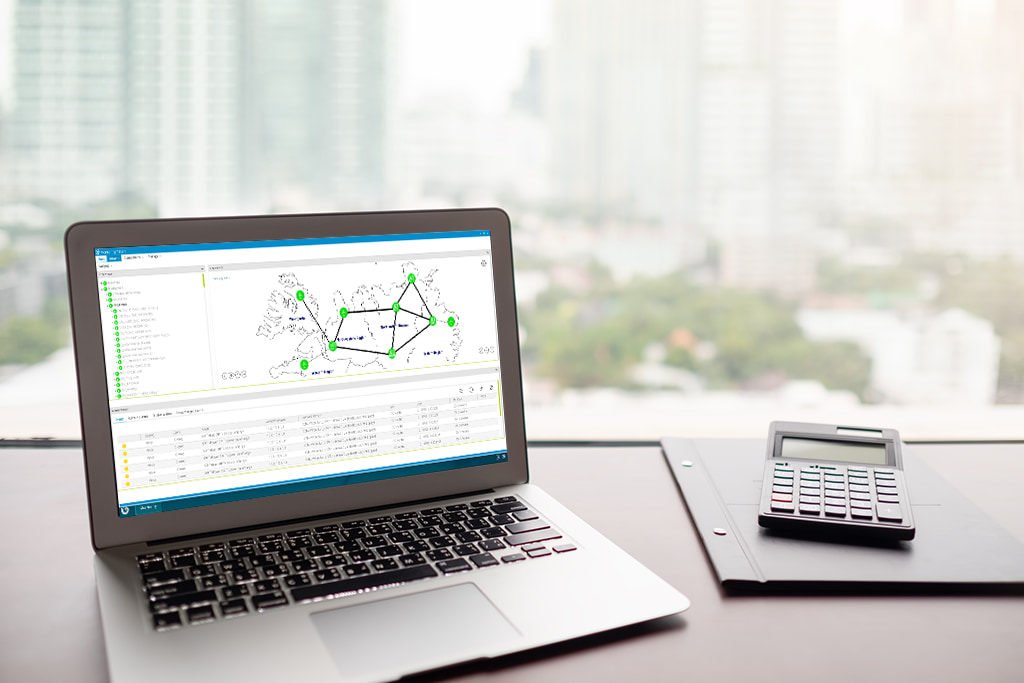30 Sep 2019

Almost 10 years ago SGRwin faced a huge challenge in the Germany Utilities market.
SGRwin was analysed by Eon Netz GmbH as an alternative to their NMS and network migration services.
This article is the transcription of the article published in Germany. If you want the German version you can read it by scrolling down and by clicking the link below.
Background
E.ON Netz operates a 22.000 kilometres long electrical network with a 110.000-volt line of PDH network with approximately 5.900 elements.
For a long time utilities companies relied on Nokia’s PDH transmission technology. Therefore, there was a real need to keep running the existing PDH installations.
However, when network management comes into play, users find themselves at a dead end because the delivery of individual hardware components are sometimes discontinued.
Eon Netz GmbH was looking for a suitable alternative and was surprised by the possibilities they found.
“After the NMS / 10 MF mediation device for Nokia network management was discontinued, PDH technology was initially available to us. However, this technology is still indispensable and critical for some services, such as the transmission of protection signals.”
stated Stefan Maier, Network Management Manager at Eon Netz
Services such as the transmission of protection signals must be transmitted in a reliable and safe way within a defined time. Although the NMS/ 10MF system was discontinued, Stefan Maier estimated 10 years of usage of PDH technology and components. Therefore, a replacement for the Nokia NMS / 10 MF was sought. The replacement of the discontinued NMS hardware was not a solution since the NMS / 10-MF system no longer supports current Windows operating systems.
What problem was Eon trying to solve?
An increasing challenge for Eon Netz was to ensure that the switched communication paths are kept up to date with the most frequent changes in the connection in the network. As the PDH system did not previously have end-to-end management and had no interface to the higher-level documentation system Connect Master, this considerably increased the effort for switching the connections and documentation. While the SDH (“Synchronous Digital Hierarchy”) system automatically provides the necessary documentation information, which requires it to be done manually for the level below 2 Mbit/s.
Before our NMS was evaluated as a possible alternative for Eon´s challenges, SGRwin had already become a successful solution within Spanish Utilities market, especially for an alarm management of Nokia PDH technology.
Further the testing of SGRwin revealed surprising new opportunities for Eon needs while, at the same time, working together with 3M:
- Higher design freedom at the graphical network representation.
- Element management, real-time alarm detection and alarm management.
- Detailed fault isolation down to the individual functional blocks of network components.
- Macro capability to control and monitor a network
- End-to-end management: Automatic generation of a point-to-point connection on a timeslot level (64 kbit / s) with diagnostic capabilities
- Northbound interfaces for connection to other alarm systems and document management
In addition to the SNMP network management, SGRwin represents an ideal platform for easier integration of many SNMP-based device technologies. Together with the functionality for the PDH technology, SGRwin can be considered as an «umbrella network management platform».
In order to meet Eon needs, the most important requirements were following three features:
- The replacement of the obsolete NMS/10-MF system with a connection to an existing higher-level alarm management
- An interface to the documentation system
- End-to-end management
What benefits has Eon Seen?
“SGRwin had to be adapted for us (language, features…etc.). The introduction of an end-to-end management for the PDH network has brought us a great advantage in efficiency . A new connection at the time slot level can now be switched on intuitively by selecting the end points. “
Stefan Maier, Network Management Manager at Eon Net
How did SGRwin solve Eon´s requirements?
- Replacement of NMS/10-MF-Systems: The old NMS/10-MF-Hardware was replaced by a new DCN adapter as concentrators for PDH bus management. The connection to the higher-level management system (IBM Tivoli Netcool) enables the integration of all alarms messages to be combined in a central alarm management system. In order to be able to do this, the SNMP interface had to be adapted. A new feature was designed to resynchronize the alarms, as well.
- Documentation system interface: In this project, an interface to the central documentation management Connect Master was implemented. The entire documentation of the Eon network message network is recorded in the Connect Master. With the newly created interface, information about network elements, such as serial numbers or the configuration, is automatically read out of the devices. This read out information is transferred to the central documentation management center, together with the connection data of all 64 kbit / s trails. Stefan Maier has estimated a 30 minutes time-savings for each connection.
- End-to-end management: Another major efficiency advantage was the introduction of company-wide end-to-end management system. Where employees previously had to dial into each node with a local console and configure individual CrossConnectors, a new connection at the time slot level can now be switched on intuitively by selecting the endpoints. End-to-end management shows which free resources are available in the network and a simple type of network clean-up has been created.
- Improved service quality and scalability: All employees have a complete access to information. If any fault occurs, the system shows you immediately which services are affected. Furthermore, the unrestricted integration of future PDH network element has also been assured.
Some barriers to commissioning
As a major barrier to the graphical representation of the network, topology presented itself with more than 5,000 network elements on the same screen window. The display of so many elements would have lasted up to 15 minutes. As an alternative solution, CIC´s programmers, together with 3M, developed a new concept where irrelevant nodes and multiplexers have been filtered. Due to the significantly lower number of stations,, a correct representation can now be seen in just a few seconds.
Conclusion:
By combining the powerful NMS like SGRwin, technical support from CIC and assistance from 3M Services, the project was completed successfully. Referring to the project, Stefan Maier said:
“It was one of the smoothest projects that we have ever had before, and with the better support of the NMS, we can now save time, work more effortlessly and minimise costs”.
Please click the following link to download the original press release:
